Tohoku, a famed region in northern Japan, known for its breathtaking landscapes, historical sites, and deep-rooted traditions, offers a remarkable travel experience that blends the natural beauty of Japan with cultural richness. This itinerary will take you through some of Tohoku’s most beloved locations, focusing on the magnificent cherry blossoms, historical landmarks, and distinctive cultural experiences which are a welcome breather from the hustle and bustle of urban Japan. Cherry blossom season in Tohoku is a completely different affair from Japan’s major cities and visitors here are able to wander and take in the breathtaking sights at their ease. Whether you’re a history buff, nature lover, or just searching for an authentic Japanese experience, Tohoku, which is one of the country’s genuine hidden gems, never fails to excite.
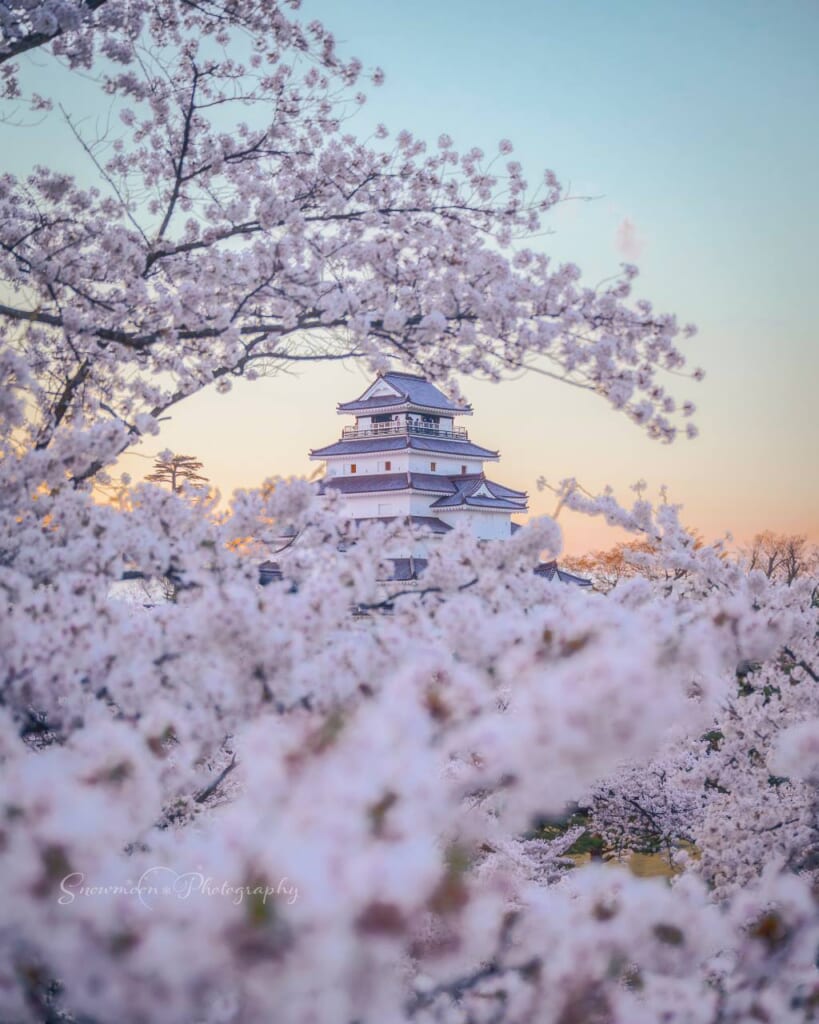
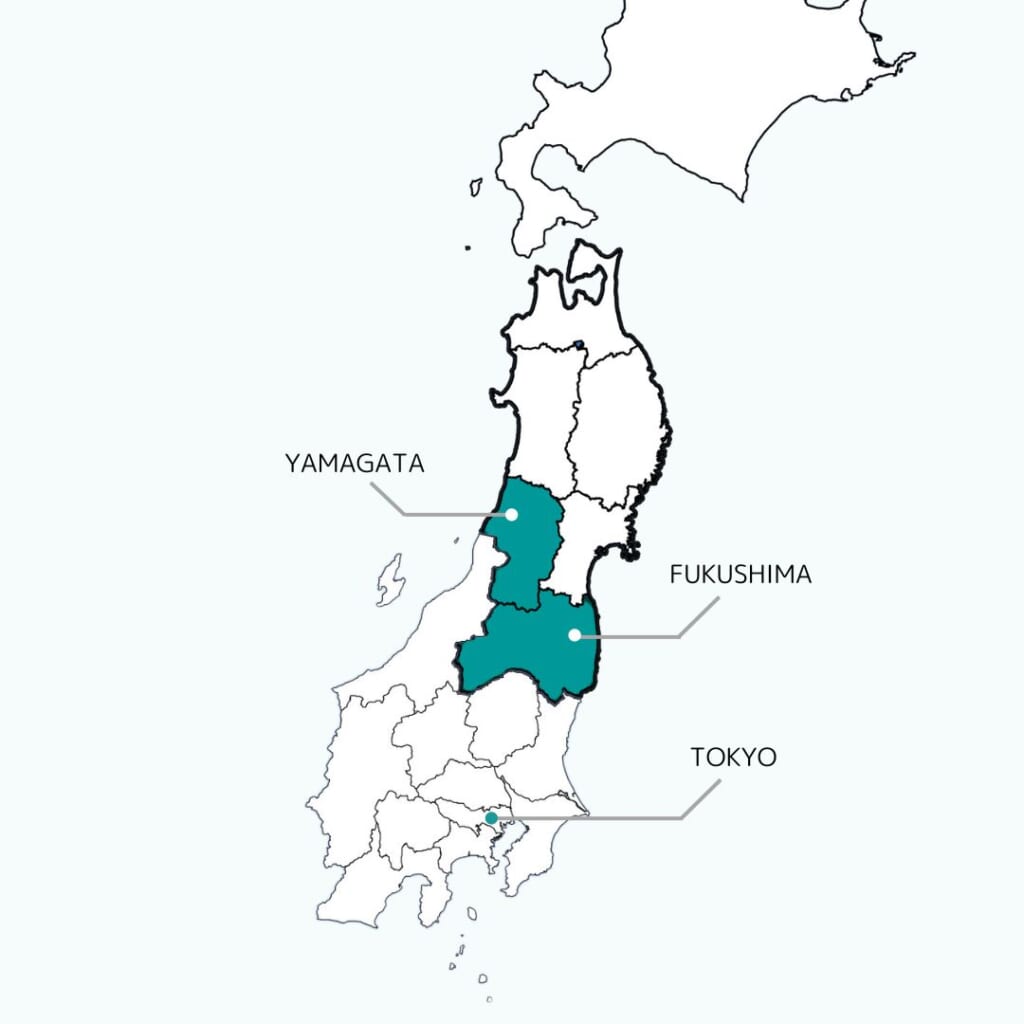
Day 1: Cherry Blossoms and History in Yamagata
The journey begins in Tokyo with a ride on the Yamagata Shinkansen “Tsubasa.” Tsubasa recently introduced its E8 series, which has been operating since March 2024.
The train itself is a testament to modern Japanese engineering and was built to accommodate the diverse needs of all passengers. Traveling aboard the sleek E8 is an experience in itself, marking the ideal start of your Tohoku adventure.
Upon arriving at Yamagata Station, it’s only a short walk to Kajo Park, home to the ruins of Yamagata Castle and one of the best spots in the city for cherry blossom viewing. The park, with around 1,500 cherry trees, becomes a pink paradise in the spring. As you stroll under the blossoms, admire the restored gates of the historic castle that stand as a reminder of Yamagata’s profound samurai past. The park is a peaceful haven where the beauty of nature fuses with history, and it’s the perfect spot to begin your exploration of the region.
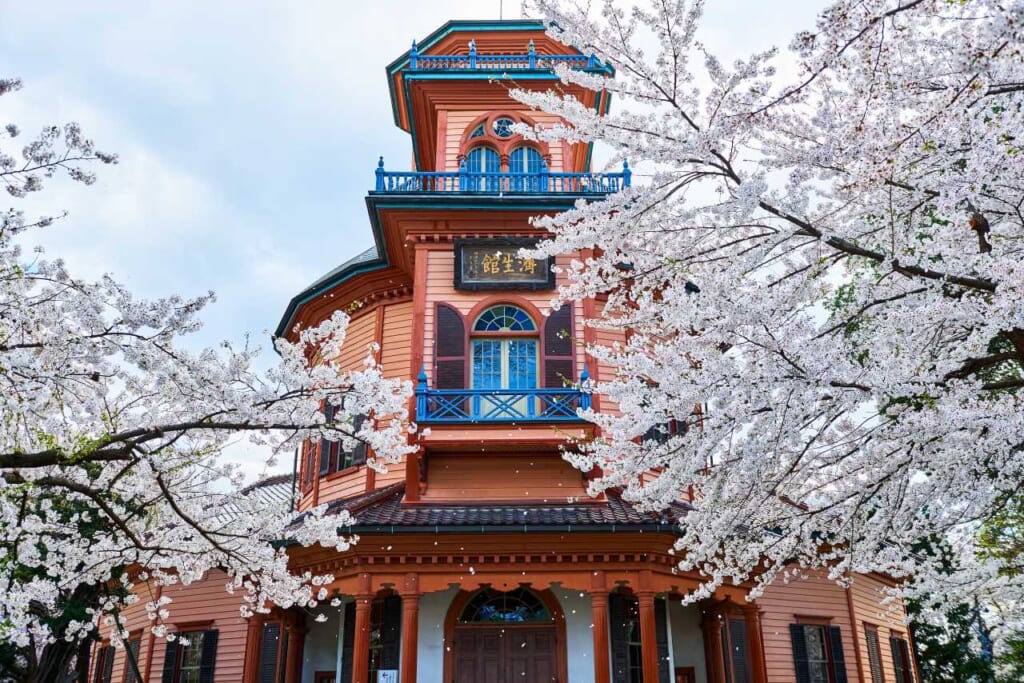
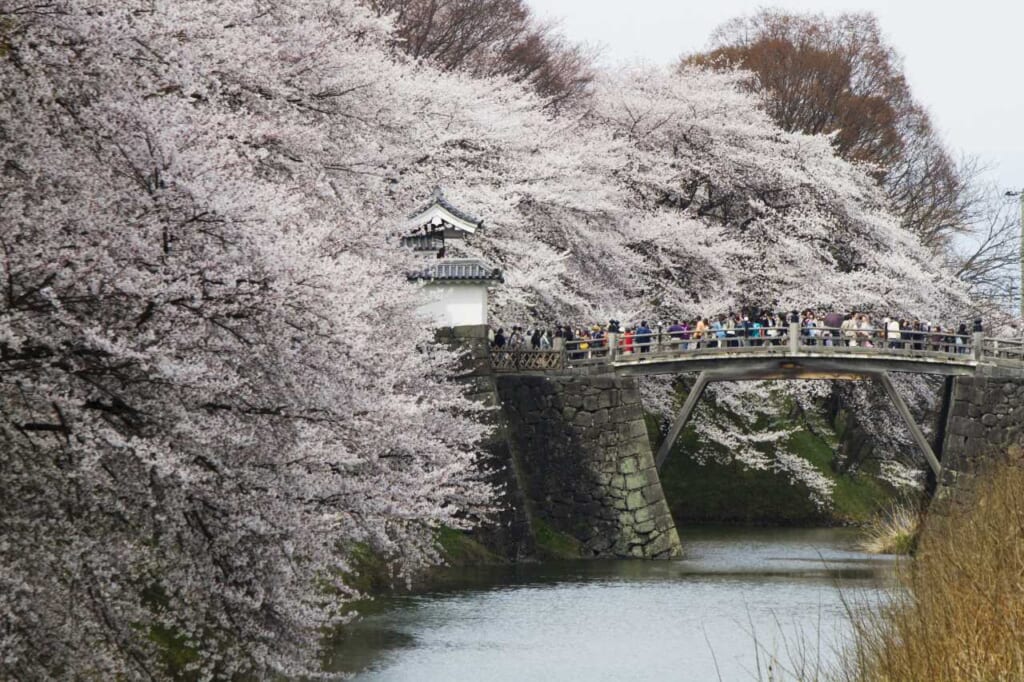
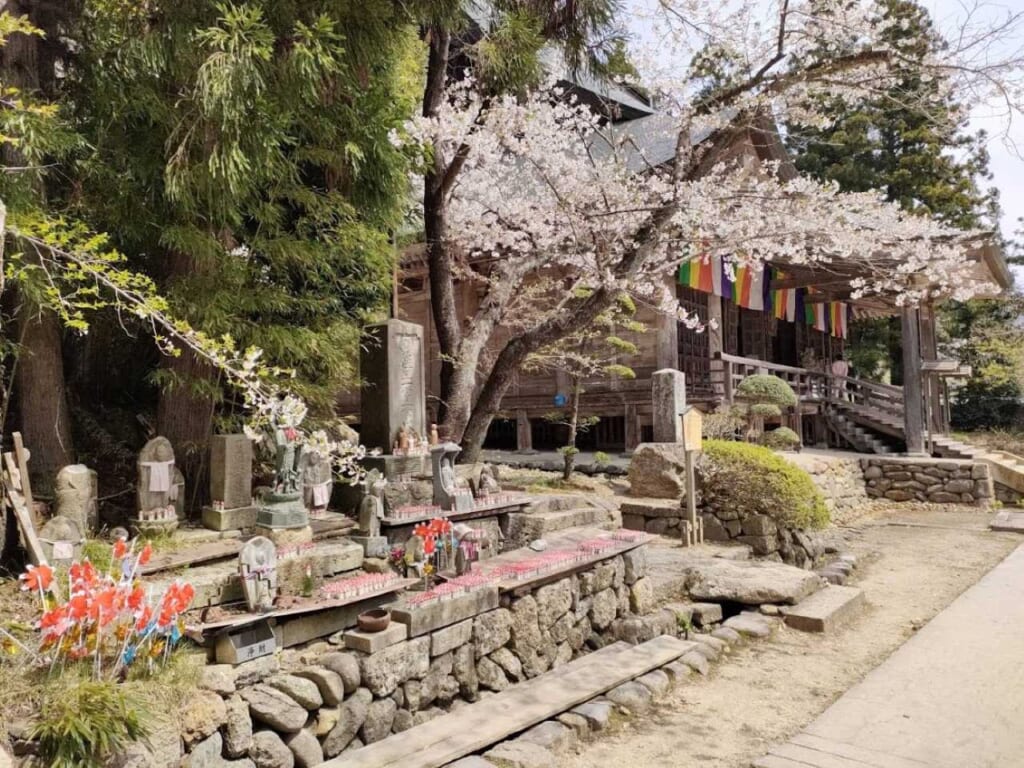
After enjoying the blossoms at Kajo Park, grab a quick meal in the city. While it’s not a picnic under the trees, a teppanyaki lunch featuring Yamagata beef at the restaurant Chomusubi will give you a taste of the region’s culinary history.
The afternoon takes you to the sacred site of Risshaku-ji Temple, commonly known as Yamadera. Famous for its spectacular mountain views and historic significance, Yamadera is also adorned with cherry blossoms, making this temple visit even more enchanting. The temple’s beauty is immortalized in the haiku of Matsuo Basho, who once visited the site during his travels. Climbing the steps to the temple not only offers a deeper connection to Japanese spirituality but also rewards visitors with stunning views of the valley, framed by cherry trees in full bloom.

After a full day of exploration, retire for the night at Hotel Metropolitan Yamagata where comfort meets convenience, allowing guests to rest and prepare for another adventure.This hotel is conveniently located directly connected to Yamagata Station, making it an ideal place to stay after a long day of traveling. Mogamai-tei, the hotel restaurant, offers some incredible local dishes including imoni stew, sashimi, an assortment of grilled and deep-fried dishes and much more. The restaurant, then, is ideal for visitors with a passion for Japanese cuisine.
Day 2: Samurai Traditions and Cultural Crafts in Aizu Wakamatsu
On the second day, hop on the Shinkansen and local trains to Aizu Wakamatsu — a city in Fukushima Prefecture which is steeped in samurai history. The main attraction here is Tsurugajo Castle, one of Japan’s most stunning castles, particularly during the cherry blossom season. About 1,000 cherry trees bloom around the castle grounds, creating a stunning contrast between the pink flowers and the castle’s red-tiled roof. The combination of history, culture, and natural beauty makes this a great spot for hanami (cherry blossom viewing), and during the evening, the blossoms are illuminated to create a magical atmosphere.
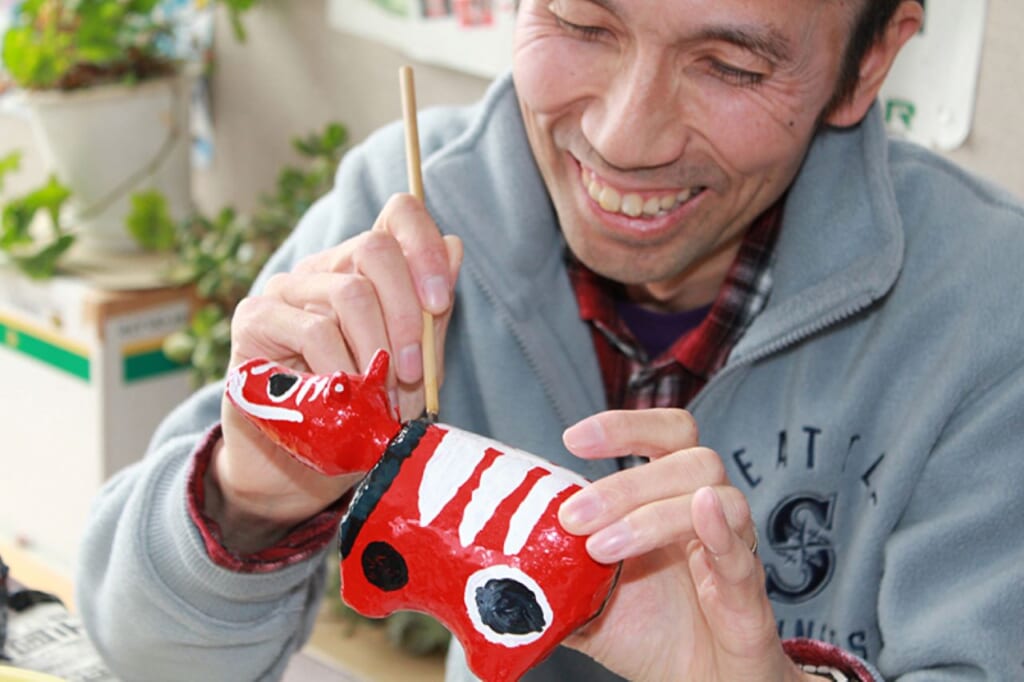
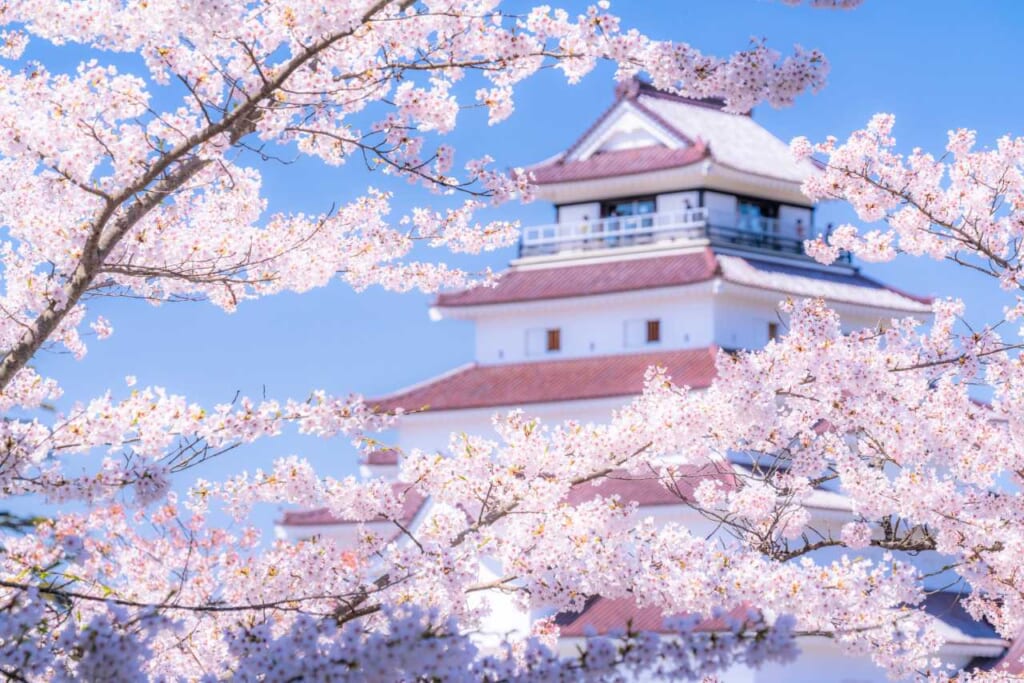
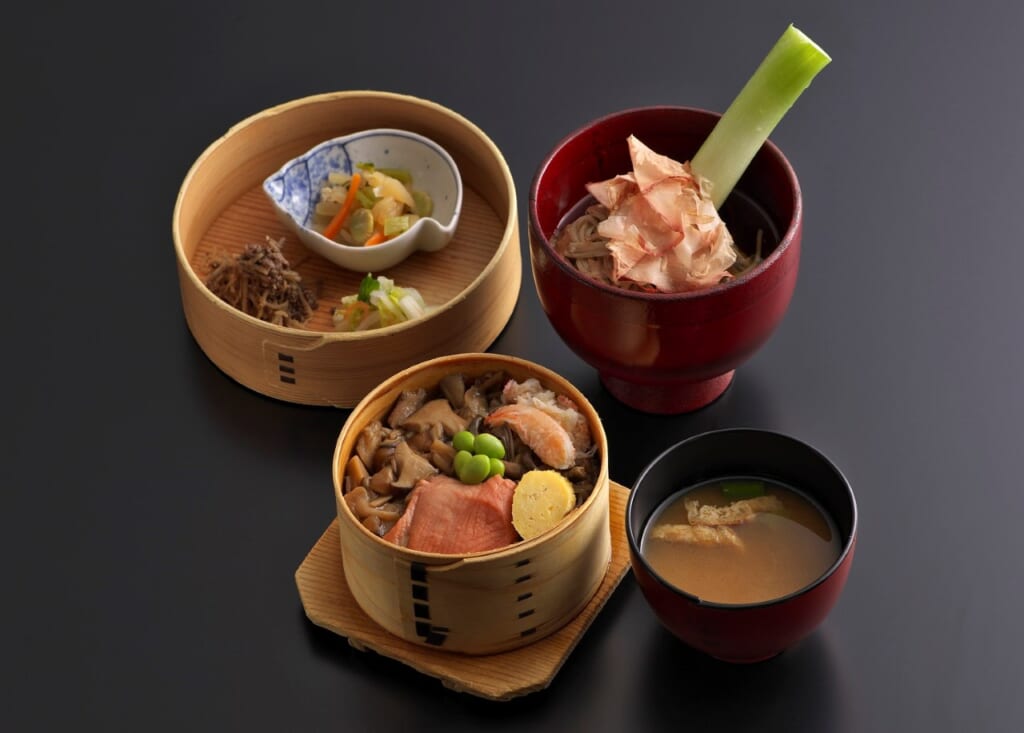
In Aizu, there is also the opportunity to enjoy wappa-meshi, a traditional dish of rice and toppings served in a wooden container. The restaurant Takino offers this local specialty, and it’s a great opportunity to immerse yourself in the flavors of the region.
The afternoon offers a hands-on cultural experience at Tsurugajo Kaikan, where it’s possible to participate in an Akabeko painting workshop. The Akabeko, a red cow figurine, is a traditional craft from the Aizu region believed to bring good luck. Painting your own Akabeko is a fun and interactive way to engage with local culture, and it makes for a special souvenir to take home to loved ones.
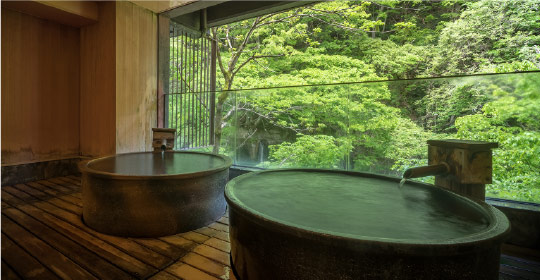
After a day filled with history and creativity, unwind at a traditional ryokan (traditional inn) in the Higashiyama Onsen area. This hot spring inn provides a serene setting for your stay, allowing you to relax in an open-air bath while surrounded by the natural beauty of the valley. The ryokan’s exquisite meals, featuring local Aizu ingredients, and the soothing atmosphere make for an unforgettable stay.
Day 3: A Journey Through Kitakata’s Cherry Blossoms and Ramen Culture
Your third day in Tohoku brings you to Fukushima’s Kitakata, a small town renowned for its ramen and cherry blossoms. The highlight here is a stroll along the weeping cherry blossom trees that line the old Nichinchu Railway Line. The three-kilometer stretch of trees in full bloom is beautiful, and you’ll encounter a steam locomotive display along the way, offering a glimpse into Japan’s railway history.
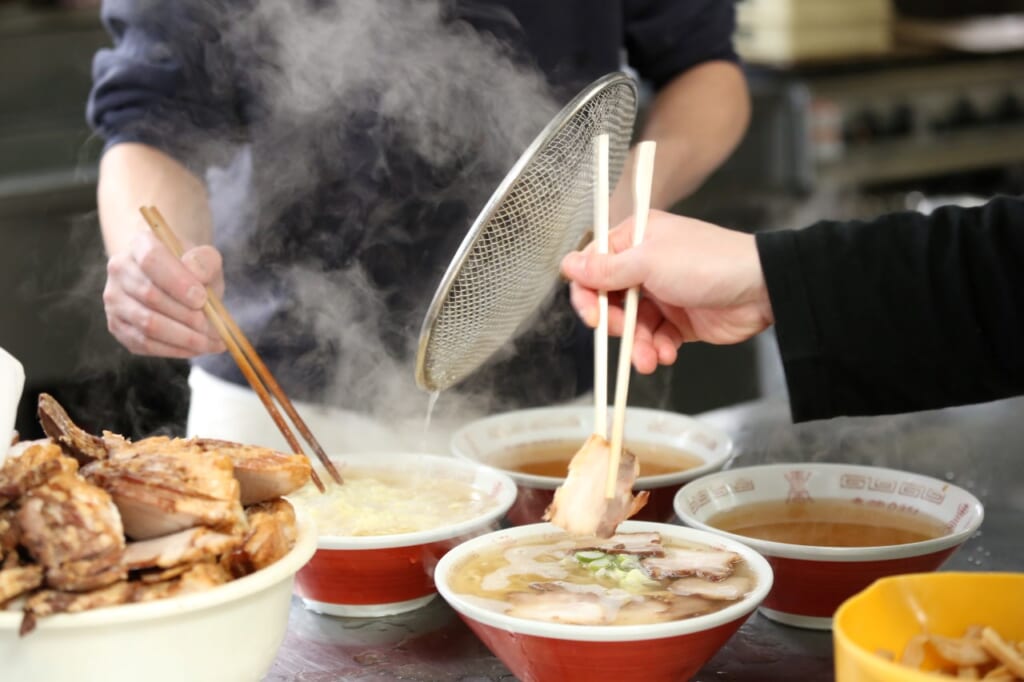
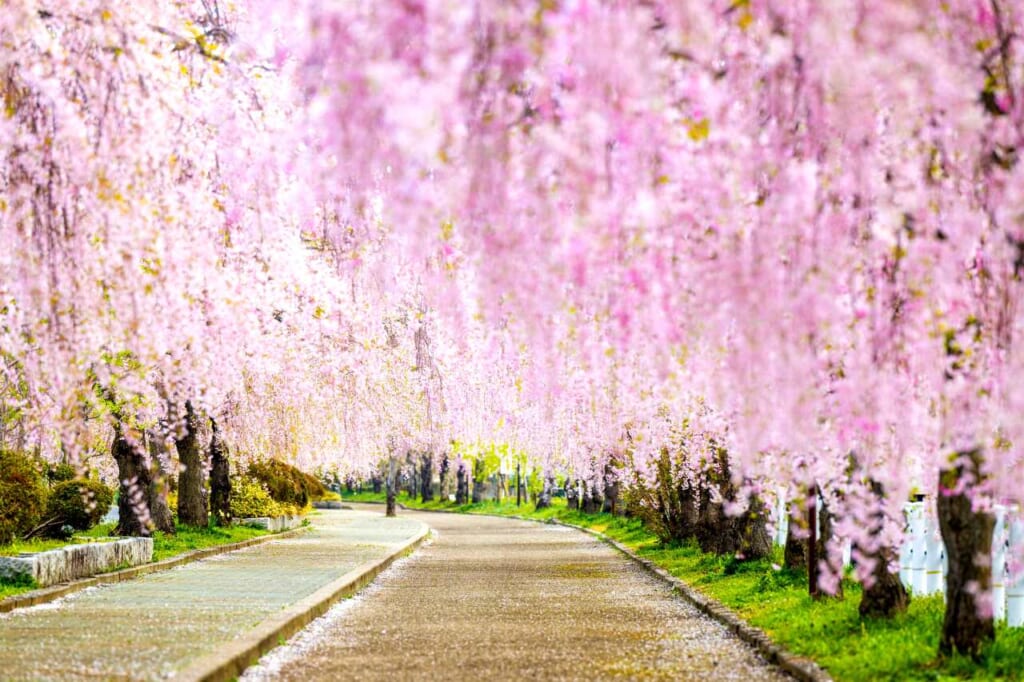
No visit to Kitakata would be complete without trying Kitakata Ramen, one of Japan’s three great ramen varieties. A bowl at Bannai Shokudo, a beloved local ramen shop, is the perfect way to warm up after walking around. The chewy noodles and rich broth are sure to satisfy any self-respecting ramen fan, and it’s a great way to experience the local culinary culture.
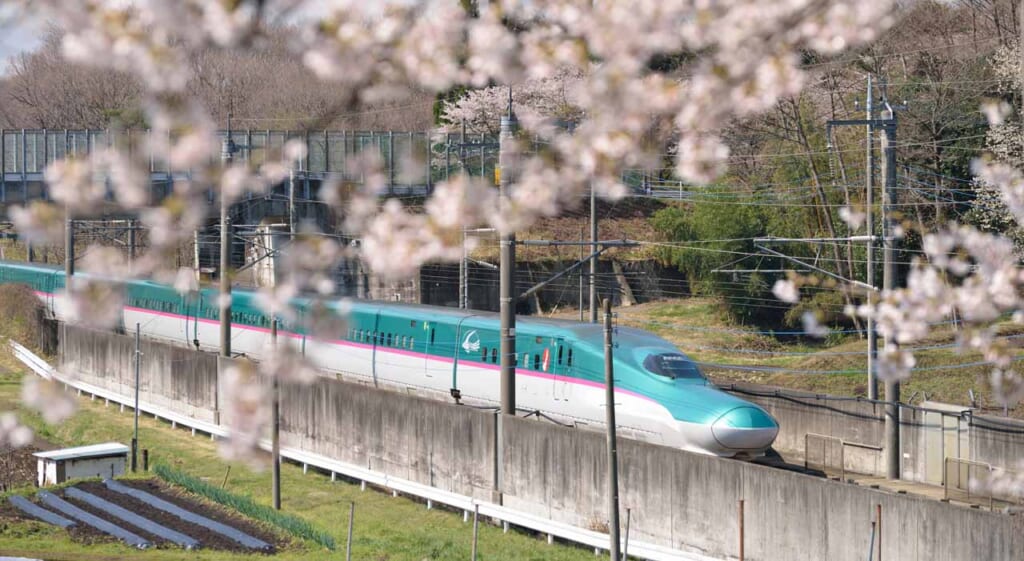
As your journey through Tohoku comes to a close, return to Tokyo via the Shinkansen E5 Series, another high-speed wonder that connects the rural beauty of Tohoku with the urban frenzy of Japan’s capital. While this particular trip may be over, the memories of cherry blossoms, castles, and cultural encounters will remain.
JR East and Travel Tips
One of the best ways to explore Tohoku is by using the JR EAST PASS (Tohoku area) which offers unlimited travel on JR East trains for a set number of days. This pass is perfect for international travelers, as it covers both Shinkansen and local trains, making it easy to travel between major destinations like Yamagata, Aizu Wakamatsu, and Kitakata. Even after visiting major sightseeing spots in Japan such as Kyoto and Osaka, you can access the Tohoku area with JR East Pass (Tohoku area).
The journey begins with your reservation. Travelers now have the option to purchase passes at ticket counters in the country or online from abroad through the JR-EAST Train Reservation which is available in nine languages. Thanks to this service, you can easily reserve your preferred seat on the new E8 series Shinkansen, which began its service in March 2024 between Tokyo and Tohoku (Yamagata/Shinjyo).
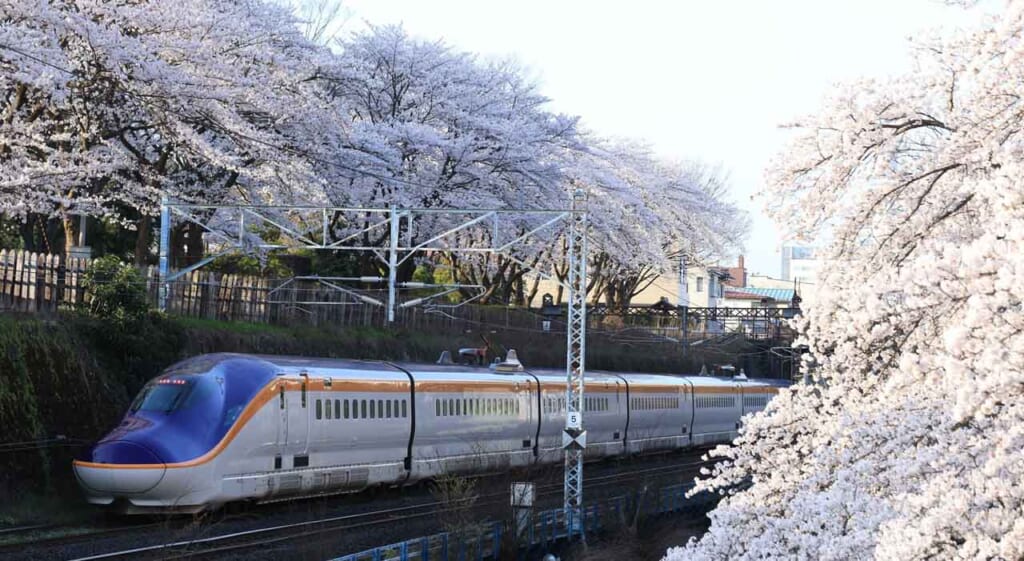
Whether you’re marveling at the cherry blossoms, exploring ancient temples, or engaging in hands-on cultural activities, Tohoku offers an unforgettable experience that showcases the very best of Japan. So pack your bags, grab your JR East Pass (Tohoku area), and prepare to explore the wonders of this under-the-radar gem in northern Japan.
For information on cherry blossoms in the Tohoku region, click here.
Sponsored by JR EAST.
Photos provided by JR EAST.
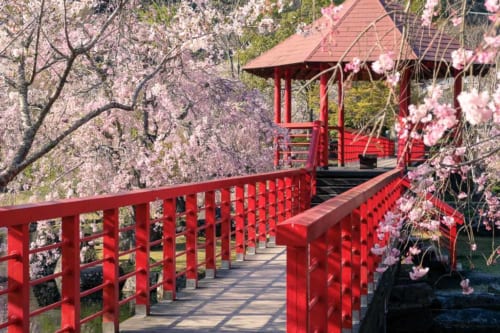
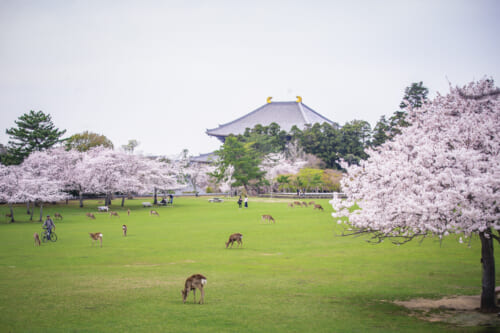

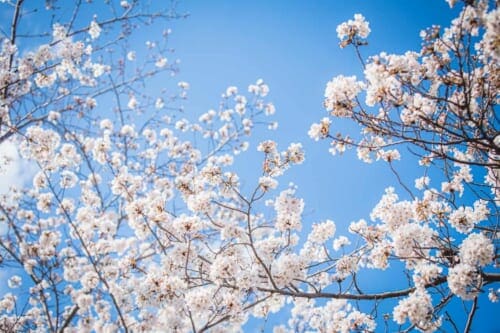
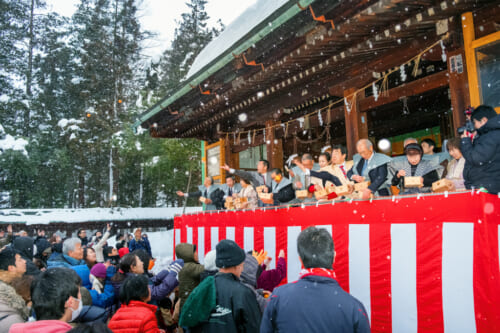
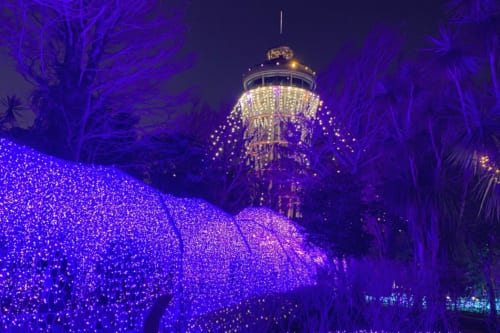
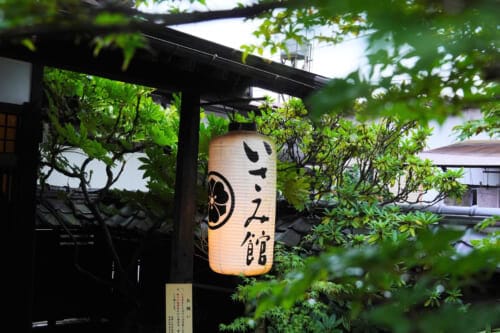

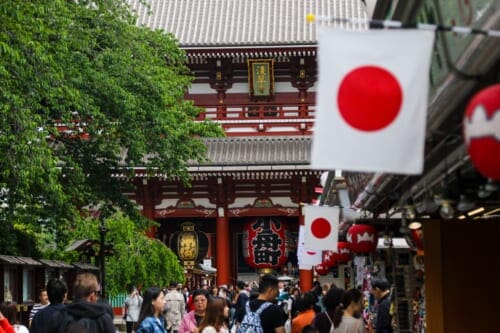
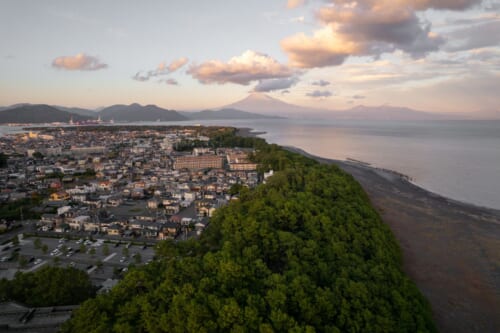
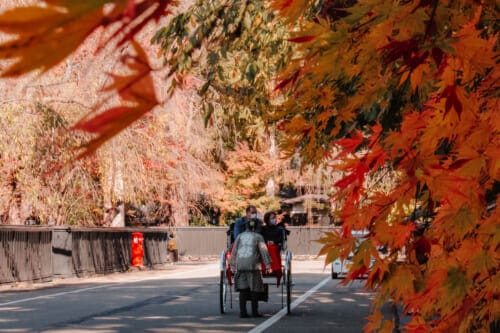


No Comments yet!